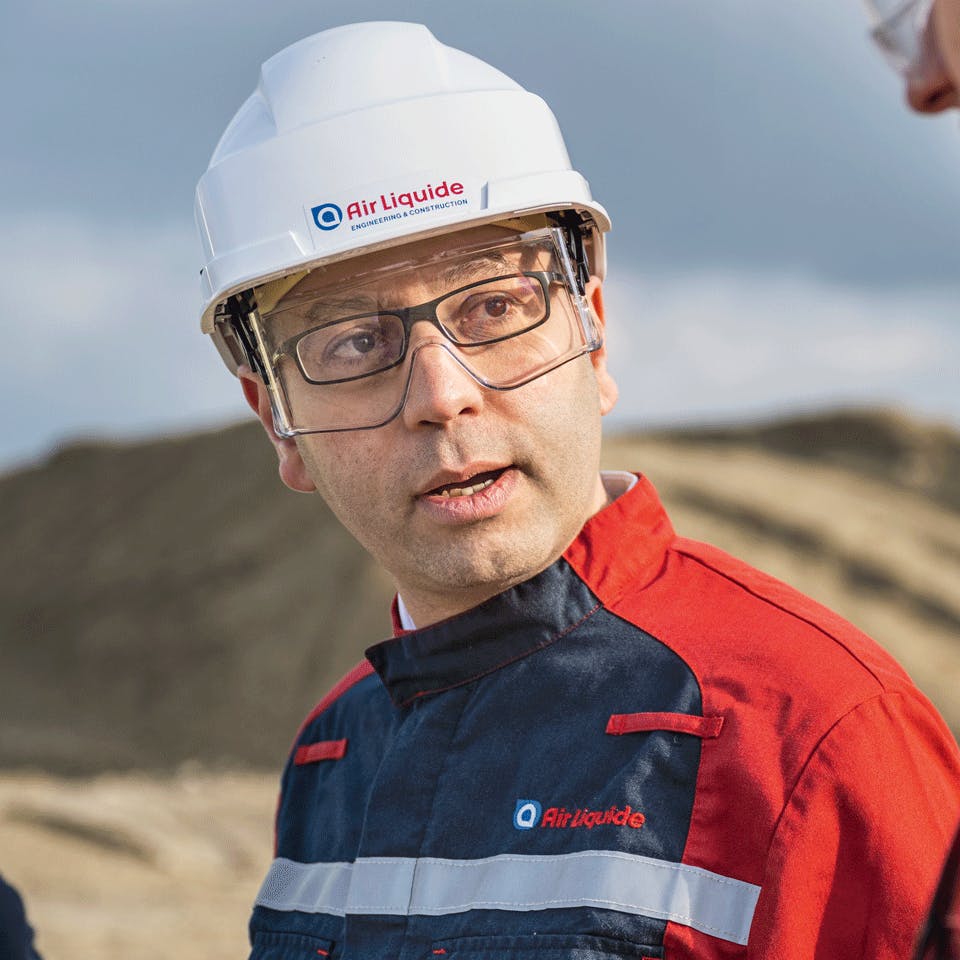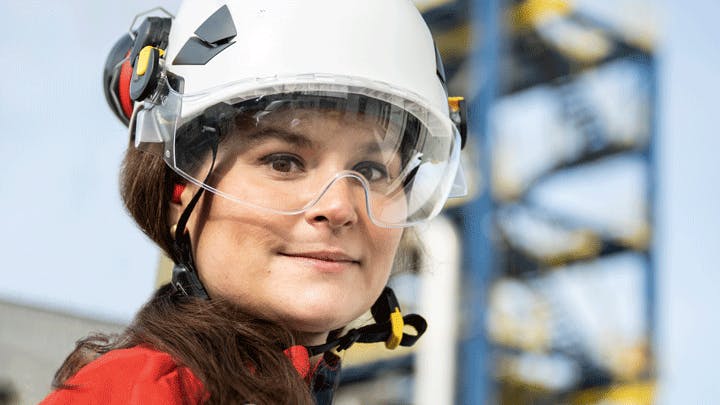Here, in 2015, the Group installed its Cryocap™ technology, which uses cryogenics to capture up to 98% of the CO2 emitted during hydrogen production - a world first. Thanks to Cryocap™, Air Liquide has created new opportunities for capturing and reducing the carbon emissions of its own sites, as well as those of its customers. “Today, we are seeing great progress being made with the construction of this vast electrolyzer,” Rahim says. The main challenge lies in sourcing the electricity that powers it. “The electricity used will come from wind turbines and photovoltaic solar farms located near the site. This is what we mean when we talk about renewable hydrogen. There will be no CO2 emissions produced during the production process,” said Rahim. As a result, up to 250,000 tons of CO2 emissions per year will be prevented, the equivalent of the emissions of a French city with 25,000 inhabitants.(3)
Downstream, Air Liquide Normand’Hy will be connected to the regional industrial ecosystem. This will allow the hydrogen to be distributed directly to industries in the area. “We will continue to collaborate with refining, petrochemical and chemical companies that require hydrogen for their production. Today, with the climate challenges we are facing, it is a matter of gradually replacing the hydrogen we already supply with renewable hydrogen. This way, the carbon footprint of industrial players can be reduced,” said Mathieu. This hydrogen will also be used to decarbonize heavy transport, starting with heavy goods and industrial vehicles, followed by buses and commercial vehicles in the region.
Not only will the Air Liquide Normand’Hy site produce renewable hydrogen, the project as a whole has an environmental approach.

“Normand’Hy’s major asset is its ability to produce competitive and carbon-free hydrogen on a large scale from renewable energy.”
[ Rahim Salemkour ]

